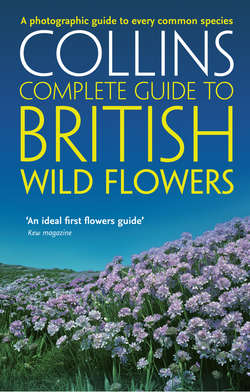Читать книгу British Wild Flowers: A photographic guide to every common species - Paul Sterry - Страница 9
ОглавлениеFLOWERS
ATTRACTIVE THOUGH MANY OF them may be, flowers are not produced to delight the human eye. Their role is strictly functional – they are the plant’s sex organs, there to produce sex cells and ensure the maximum chance of successful fertilisation taking place.
BASIC FLOWER STRUCTURE AND FUNCTION
In a few species, male and female sex cells are borne in separate flowers, or even on different plants, but in most cases they appear together within the same flower. Male sex cells are contained within pollen, tiny grains that are produced by structures called anthers and borne on slender stems referred to as filaments; collectively, anthers and filaments are referred to as stamens. The female part of most flowers comprises the ovary, containing the female sex cells, above which is borne the stigma (which receives the pollen) carried on a stem called the style.
Some plants, such as grasses and catkin-bearing shrubs, employ the wind to carry their pollen to others of the same species. Vast quantities of pollen are required to achieve a successful outcome with such a random process. Most other species adopt a more targeted approach and use the services of animals – insects in almost all cases – to transfer pollen. In exchange for a meal, in the form of nectar, insects inadvertently carry pollen on their bodies to the next flowers they visit; with any luck, a neighbouring plant of the same species will be visited while pollen still persists. In almost all species, flower structure has evolved to avoid self-pollination and to maximise the chances of cross-pollination – pollen being transferred to visiting insect pollinators and received from other plants by the same agents.
Bumblebees, and bees generally, are the classic insect pollinators. They visit flowers in search of nectar and unwittingly acquire a dusting of pollen, which is slightly sticky, on their hairy bodies; this is then carried to subsequent flowers they visit.
Cross-section through a typical flower, in this case a crane’s-bill.
Close-up of a stamen.
Close-up of the stigma, style and ovary.
